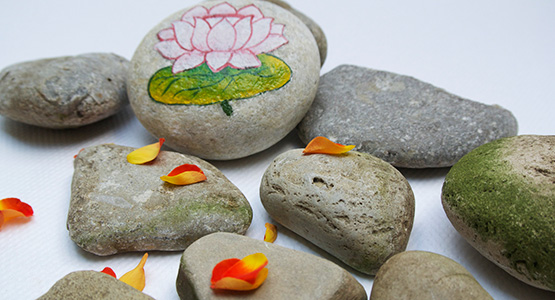If you read the first post in this series, you already know a little bit about how Ayurveda views individuality. In this post, we will explore another key principle of the science—health comes from harmony.
We are all familiar with viewing health as “not being sick.” In fact, many people think about it as being symptom-free. If medications, patches or inhalers are treating the pains for which they were prescribed, then you are essentially healthy, right?
From an Ayurvedic perspective, this line of thinking does not fly. The science understands that if there are symptoms or imbalances—whether masked or not—you are not functioning as you should. This is why Ayurveda defines health from the other end of the spectrum. Health is the state where you are keeping yourself in alignment. Symptoms never need to manifest. In other words, health comes from a state of internal harmony.
It is important to emphasize that, in Ayurveda, harmony is not just in the body. Ancient Masters recognized the importance of the complex interplay between mind-body-senses thousands of years ago. Your grandmother might have called this being “comfortable in your own skin.” Regardless of how it is expressed, this feeling of peace and contentment is the cornerstone of good health. This is where harmony begins.
Moving into the body, here is some modern-day terminology to put this idea of harmony into perspective. It is well documented that your bodily functions operate best at an optimal setting—temperature, pressure, acid/base ratio, speed of transmission. Your body is always working to maintain these “settings” because that is how it stays healthy. Ayurveda might call this process your natural intelligence. Conventional medicine refers to it as homeostasis.
Homeostasis is the maintenance of internal conditions under fluctuating environmental conditions. Your body operates as a self-regulating mechanism by continually making physiological adjustments. The body is set up with feedback loops to do this. These loops enable your body to maintain ideal conditions regardless of external stimulants (weather changes, stressors, time of day and food choices).
Your natural intelligence makes millions of daily decisions to keep you in alignment. And it gives you subtle—and sometimes not so subtle—clues when things are out of alignment. Most of the time, you can intuitively tell when something isn’t quite right. You might notice some heartburn, loose stool, fatigue, incessant burping, loss of appetite or constipation. The list of clues goes on and on. Think about when you were a kid. You might remember mom or grandma asking about your bowel movements. There is a reason for this. Ayurveda says that imbalances (and ultimately diseases) may start in the mind or senses, but their physical manifestation begins in the digestive system.
The Masters of Ayurveda didn’t have thermometers, probes or meters. They simply understood that when the body, mind and senses were in harmony, its natural intelligence could call the shots. Here are a few signs that you are in a state of harmony:
- You are hungry at mealtimes (every 4 to 6 hours)
- You are eliminating wastes daily (urine, feces and sweat)
- Your stool is well formed and released without pain, unwanted smell, sound or undigested food particles
- You are physically active enough to break a sweat each day
- You are free of heartburn, burping, hiccups or gas
- You don’t feel “weighted down” or sluggish
- Your sleep is uninterrupted and restful, and you feel energized and rejuvenated in the morning
- You feel joy and vibrancy in life
Did you mentally check “yes” to each of these bullets? If not, your body might be giving you a subtle request for change. Think about what you have been eating lately, your sleeping patterns or the amount of physical activity you are giving your body daily. Something probably needs to be tweaked.
One of the amazing things about Ayurveda is that it puts you in tune with the marvels of your own body. And the more you apply it, the easier it becomes to create harmony in your own life. Keep an eye out for our next post in this series. It will feature a simple but powerful self-discovery tool.
What are your thoughts on maintaining harmony—do you pay enough attention to the subtle signs?


